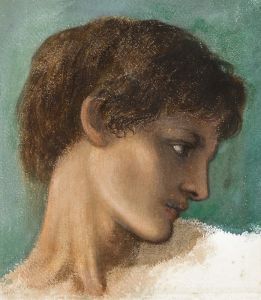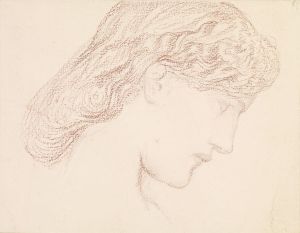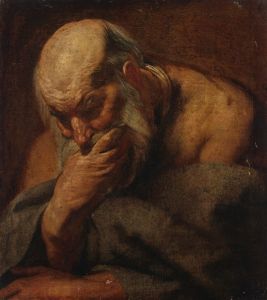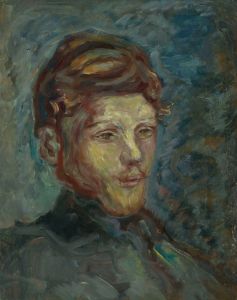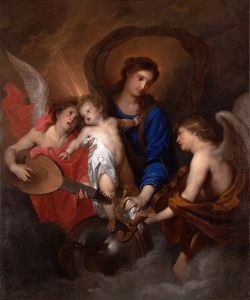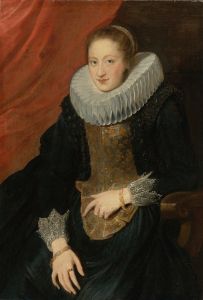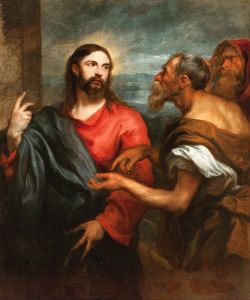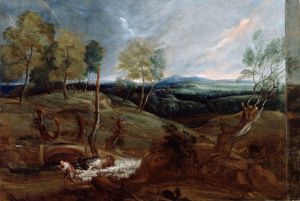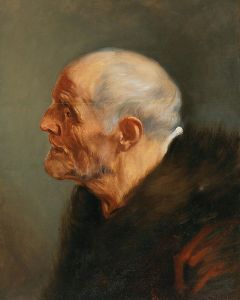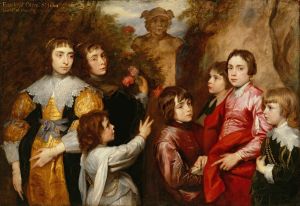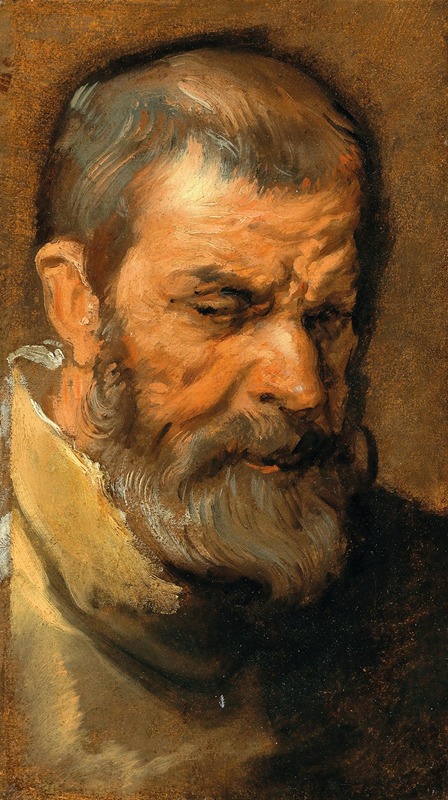
Head Of A Bearded Man
A hand-painted replica of Anthony van Dyck’s masterpiece Head Of A Bearded Man, meticulously crafted by professional artists to capture the true essence of the original. Each piece is created with museum-quality canvas and rare mineral pigments, carefully painted by experienced artists with delicate brushstrokes and rich, layered colors to perfectly recreate the texture of the original artwork. Unlike machine-printed reproductions, this hand-painted version brings the painting to life, infused with the artist’s emotions and skill in every stroke. Whether for personal collection or home decoration, it instantly elevates the artistic atmosphere of any space.
"Head of a Bearded Man" is a painting by the renowned Flemish Baroque artist Anthony van Dyck. Van Dyck, born in 1599 in Antwerp, was a prominent figure in the art world during the 17th century and is best known for his portraits. He was a leading court painter in England and had a significant influence on the portraiture of the time.
The painting "Head of a Bearded Man" is a study that showcases van Dyck's exceptional skill in capturing human expression and character. This work is often categorized as a tronie, a type of study that focuses on the head or face, emphasizing expression rather than identity. Tronies were popular during the Baroque period and were used by artists to explore different facial expressions, lighting, and textures.
In this particular painting, van Dyck demonstrates his mastery of chiaroscuro, the technique of using strong contrasts between light and dark to achieve a sense of volume and three-dimensionality. The bearded man's face is illuminated by a soft light that highlights the texture of his skin and the intricate details of his beard. The background is kept dark, which not only brings the viewer's focus to the man's face but also adds a dramatic effect typical of Baroque art.
Van Dyck's brushwork in "Head of a Bearded Man" is both precise and fluid, capturing the subtle nuances of the man's expression. The painting reflects van Dyck's ability to convey emotion and depth, characteristics that made his portraits highly sought after by patrons across Europe. His influence extended beyond his lifetime, impacting the development of portrait painting in England and beyond.
While the identity of the bearded man in the painting is unknown, the work is valued for its artistic merit rather than its depiction of a specific individual. It serves as an example of van Dyck's exploration of human physiognomy and his interest in capturing the essence of his subjects.
"Head of a Bearded Man" is part of van Dyck's broader oeuvre, which includes numerous portraits of nobility, religious figures, and mythological subjects. His work is characterized by elegance, a keen attention to detail, and a sophisticated use of color and composition. Van Dyck's legacy is preserved in many major art collections worldwide, and his paintings continue to be studied and admired for their technical brilliance and emotional depth.
In summary, "Head of a Bearded Man" exemplifies Anthony van Dyck's skill as a portraitist and his contribution to the Baroque art movement. The painting remains a testament to his ability to capture the complexity of human expression and his enduring influence on the art of portraiture.





